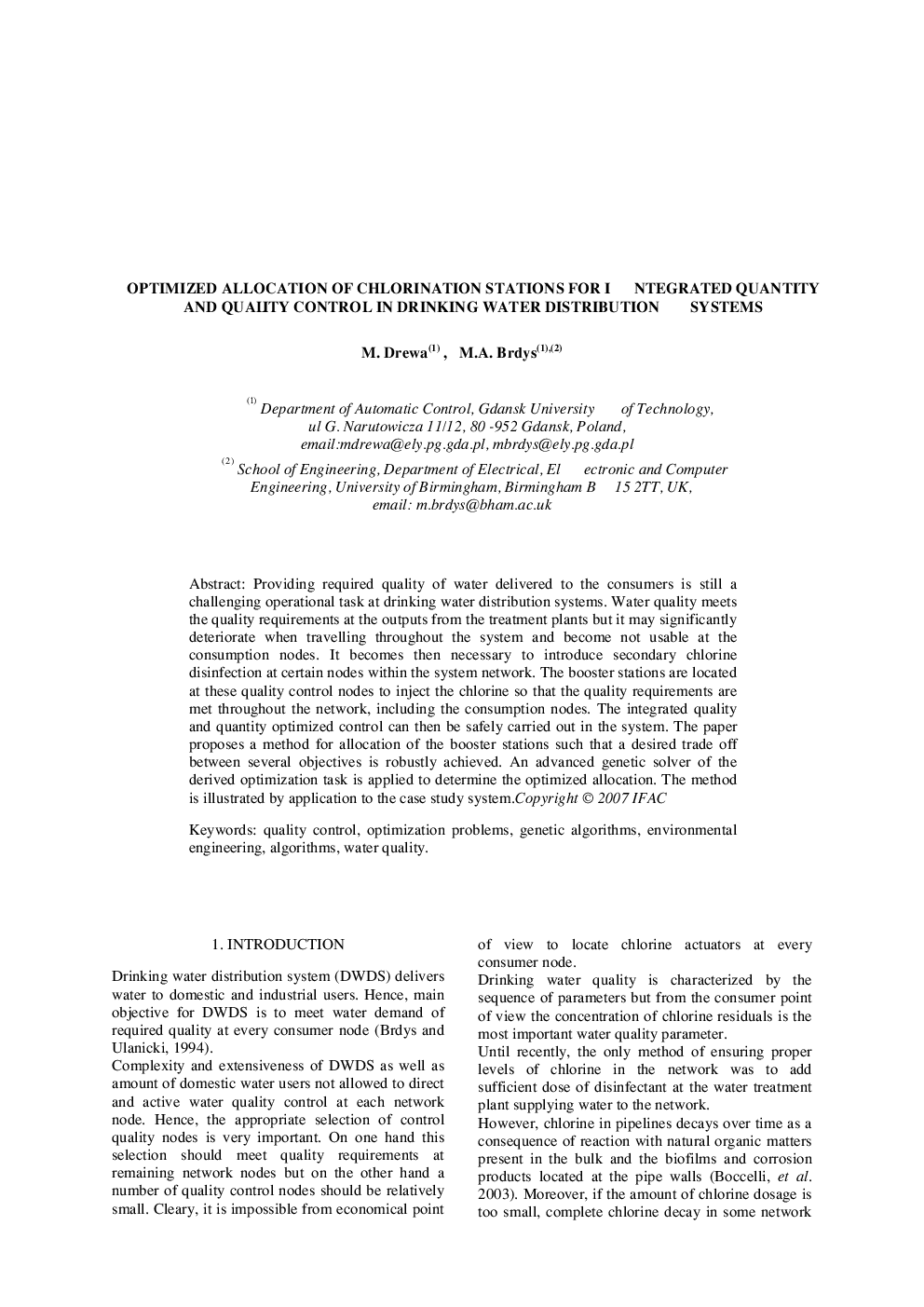| Article ID | Journal | Published Year | Pages | File Type |
|---|---|---|---|---|
| 720967 | IFAC Proceedings Volumes | 2007 | 6 Pages |
Providing required quality of water delivered to the consumers is still a challenging operational task at drinking water distribution systems. Water quality meets the quality requirements at the outputs from the treatment plants but it may significantly deteriorate when travelling throughout the system and become not usable at the consumption nodes. It becomes then necessary to introduce secondary chlorine disinfection at certain nodes within the system network. The booster stations are located at these quality control nodes to inject the chlorine so that the quality requirements are met throughout the network, including the consumption nodes. The integrated quality and quantity optimized control can then be safely carried out in the system. The paper proposes a method for allocation of the booster stations such that a desired trade off between several objectives is robustly achieved. An advanced genetic solver of the derived optimization task is applied to determine the optimized allocation. The method is illustrated by application to the case study system.
